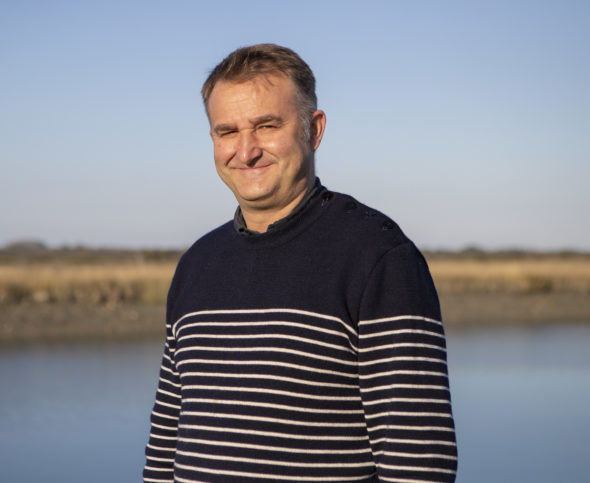30 years of selection programs
Jean-Sébastien Bruant: “We initiated FMDS selection programs in 1993 for gilthead sea bream, 2003 for meagre and 2009 for European sea bass by mass selection on growth and morphology. Management of inbreeding was soon secured using DNA parentage assignment and optimal genetic contributions principle. The biosecured land-based broodstocks were improved by sib selection on growth in sea cages and resistance to three diseases: viral nervous necrosis (VNN) and vibriosis in sea bass and pasteurellosis in sea bream.
We have also supported the development of two 57K SNP arrays (1 in bass and 1 in bream) to boost our genetic progress and to investigate improvement of new potential traits. The first juveniles benefiting from the investments in genomics have been produced since 2018. Optimization of genomic selection is also a key issue that needs to balance costs of phenotyping, genotyping and expected genetic gains.
Combining the expertise of geneticists and nutritionists in AquaIMPACT helps the whole industry
AquaIMPACT is an interesting mix of expertise of geneticists and nutritionists, an approach rarely used for the benefit of the whole industry. The transition to genomic selection has also been an opportunity to us to target new traits in sea bream, and in AquaIMPACT the focus is on fatty acid composition recorded by Raman spectroscopy and on the efficiency of selection targeting performance in sea cages.
Good work progress through covid-19 pandemic
Regardless of the covid-19 crisis, we have succeeded to collect all data, and INRAE has already genotyped nearly 2000 fish reared in our protected land-based breeding nucleus or in sea cages. Calibration equation to predict fatty acid composition with Raman spectroscopy were presented at the last AquaIMPACT general assembly by CNRS and SYSAAF. The estimation of genomic parameters and putative QTLs of production traits and fatty acid composition is in progress by SYSAAF, INRAE and Ifremer.
In parallel, we are evaluating the benefit of imputation in genomic selection in collaboration with additional R&D partners, e.g, Roslin Institute (Scotland) and Luke (Finland). Imputation may be used to compensate for missing data or to reduce genotyping costs.
| Who’s writing?
|

 I’m Jean-Sébastien BRUANT, General Manager of FMDS (Fermes Marines du Soleil – the most important french marine fish hatchery). Since 1993, I was in charge of the development of the FMDS breeding programs. I took his position in 2007. I’m also Board member of several professional organizations among which SFAM (Marine Aquaculture French Syndicate) & SYSAAF (French association of Poultry, Aquaculture and Insects breeding companies), which is also a partner of AquaIMPACT.
I’m Jean-Sébastien BRUANT, General Manager of FMDS (Fermes Marines du Soleil – the most important french marine fish hatchery). Since 1993, I was in charge of the development of the FMDS breeding programs. I took his position in 2007. I’m also Board member of several professional organizations among which SFAM (Marine Aquaculture French Syndicate) & SYSAAF (French association of Poultry, Aquaculture and Insects breeding companies), which is also a partner of AquaIMPACT.